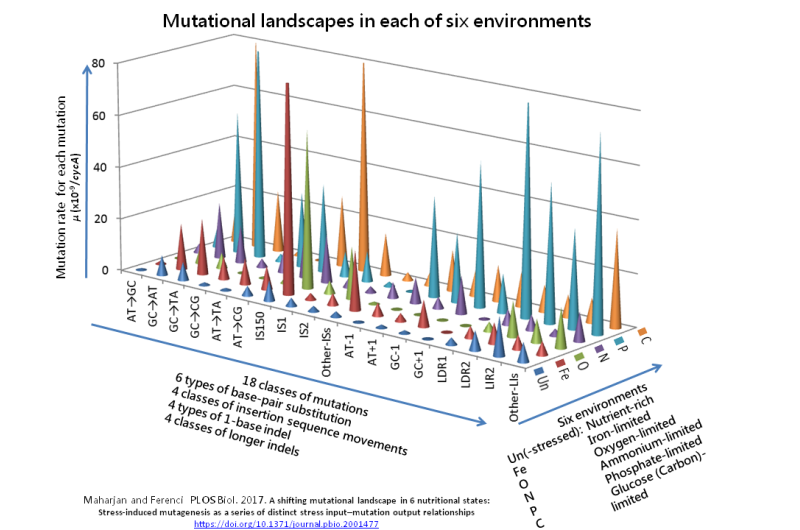The road not taken: Do stress-specific mutations lead down different evolutionary paths?

Starvation for essential elements determines the pattern of genetic variation.
Evolution is rather simple in outline; plentiful biological variation allows natural selection to pick the fittest variant that reproduces and out-competes the other variants in a population.
Since Darwin, we have learned a lot about how selection and fitness determine evolutionary outcomes but a lot less about the variation part of evolution.
The neglect of variation as a determinant of evolution was common in the 20th century, largely because the common belief was that genetic variation through mutations was random and common so unlikely to limit evolutionary outcomes.
In this research, Maharjan and Ferenci discovered that genetic variation is not uniform in different environments and that nutritional factors provide a strong influence on what variation is available to organisms.
To resolve the randomness of mutations in different environments, M&F used tightly controlled cultures of a bacterium whose growth was limited by each of the most important essential elements for life (i.e. hunger for carbon, oxygen, nitrogen, phosphorus and iron). One of these elements was limiting in each culture, the others being in excess. In chemostats, the organisms were grown at the same rate so the level of nutritional stress was the same, even though the limiting nutrient was different.
The detailed analysis of mutations in these nutritionally distinct environments provides an entirely new perspective on the nature of mutation and genetic variation in evolution. Even at the same growth rate (i.e. similar fitness levels), some, but not all, nutritional limitations significantly increase the number of mutations. Other environments do not have increased total mutations but we find that the proportions of 16 different types of mutation are all environment-specific.
Remarkably, there were over 100-fold differences in the availability of some types of mutation between, say oxygen and phosphorus limitation.
Phosphorous and carbon starvation induced a four- to nine- fold increase in the total mutation rate (per locus per generation), whereas nitrogen, oxygen and iron starvation had no impact on the mutation rate. Interestingly, regardless of the total mutation rates, the mutation spectra differed substantially across all stresses (see Figure attached). For instance, IS mutations (Insertion Sequence transpositions) were higher in Fe and O starvation compared to C and N, and lowest under P limitation. P limitation also induced a large overproduction of BPS (Base Pair Substitutions), primarily due to GC?AT transitions and GC?TA transversions. Thus, each stress produced a unique set of mutations that were then available for subsequent evolution.
The conclusions are that evolutionary dynamics may be shaped by exposure to specific nutritional stresses; nutrition determines mutations! Furthermore, organisms exposed to a repeated, specific nutritional stress may accumulate distinct mutations over long periods, potentially solving some previously unexplained patterns of genome architecture over time. Mutation availability in different environments is thus a fundamental feature of evolution.
The study is published in PLOS Biology.
More information: PLOS Biology (2017). DOI: 10.1371/journal.pbio.2001477
Journal information: PLoS Biology
Provided by University of Sydney


















